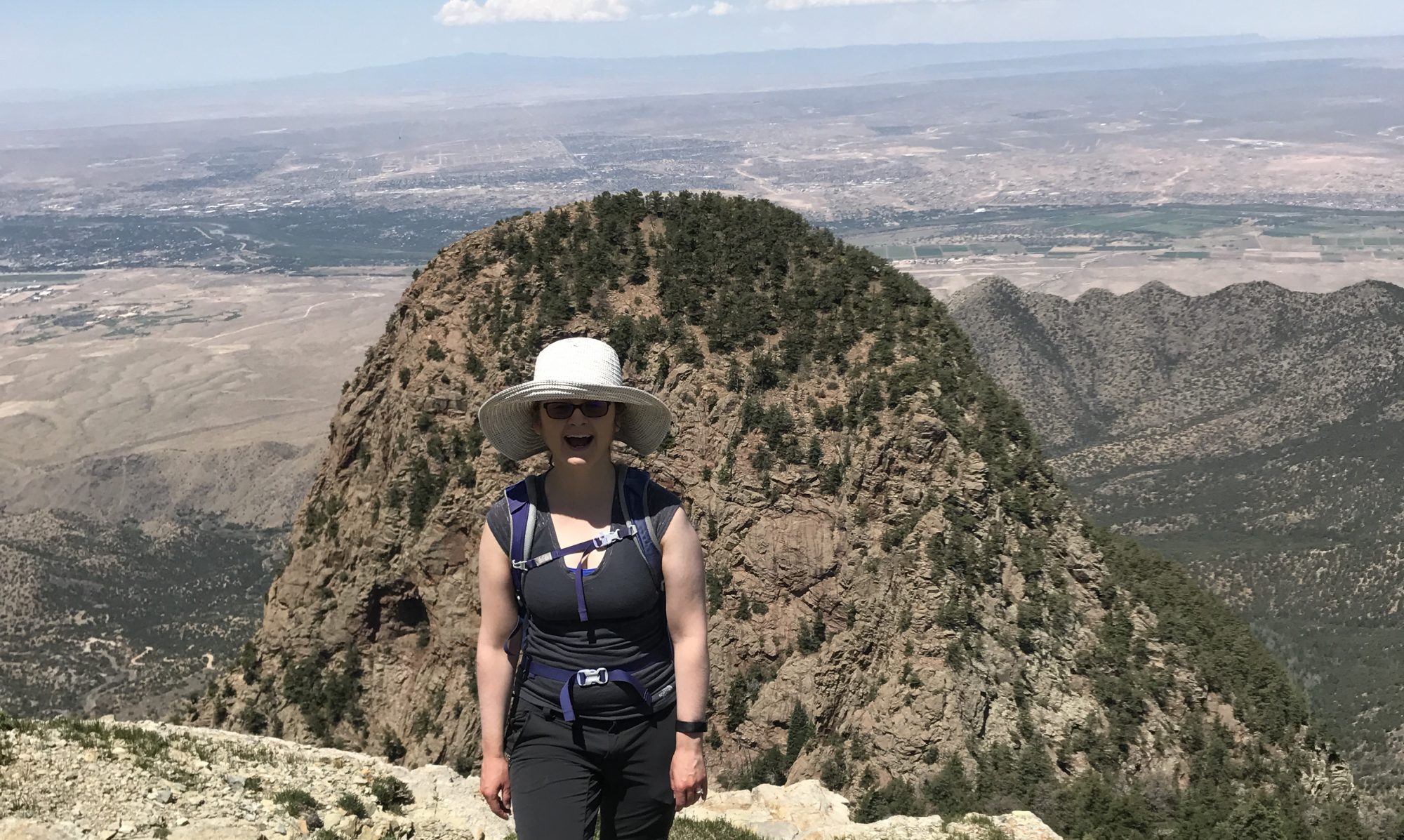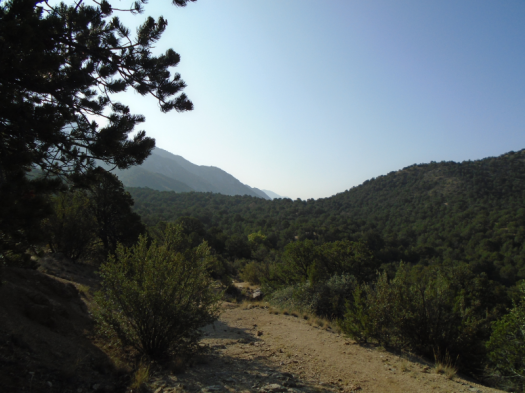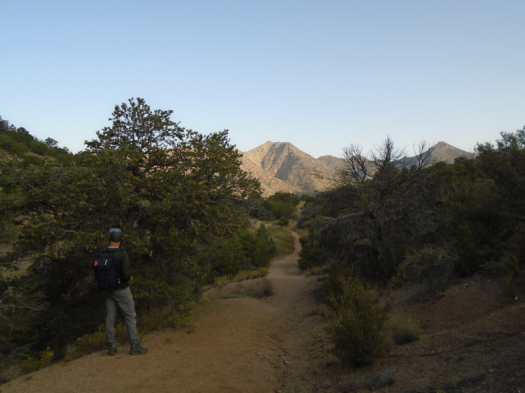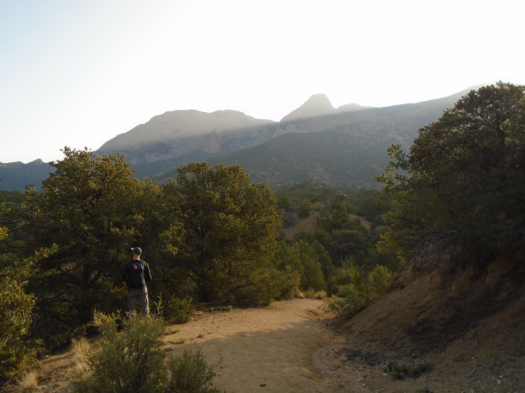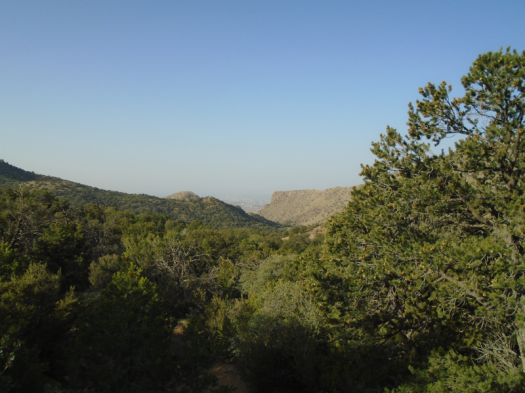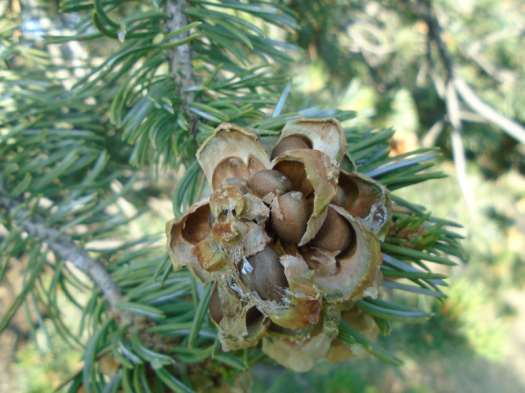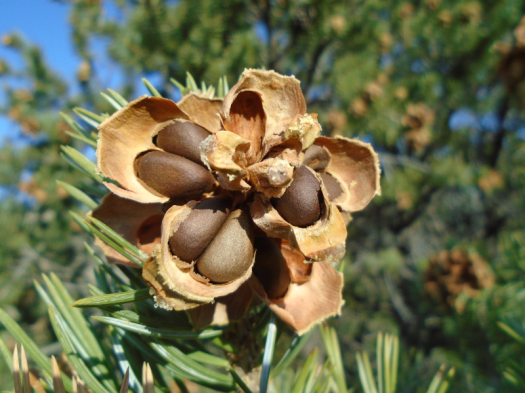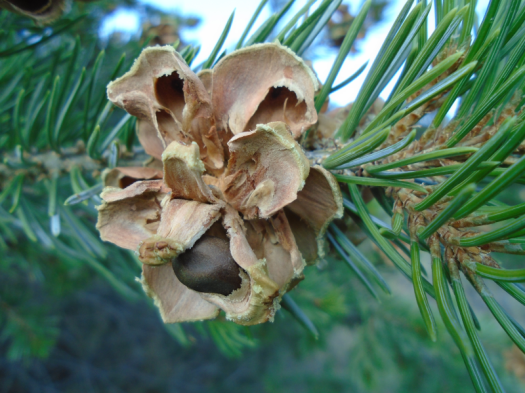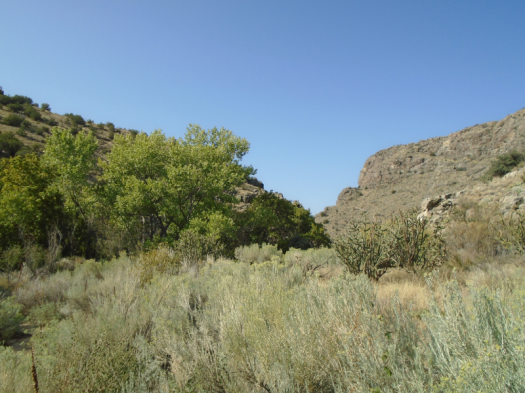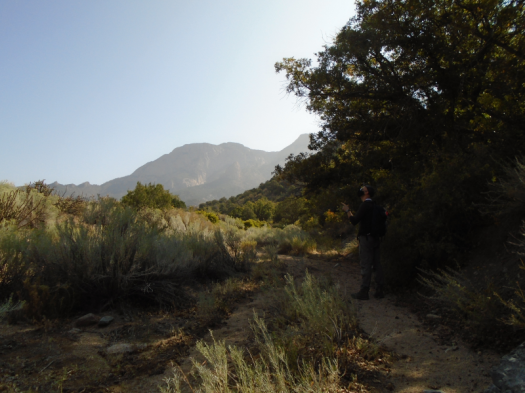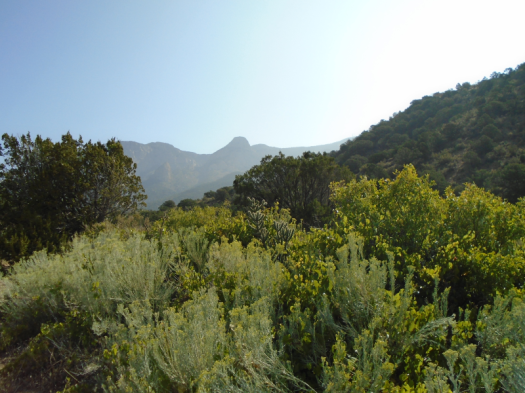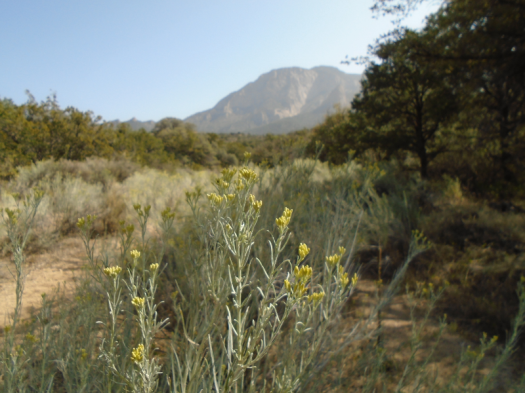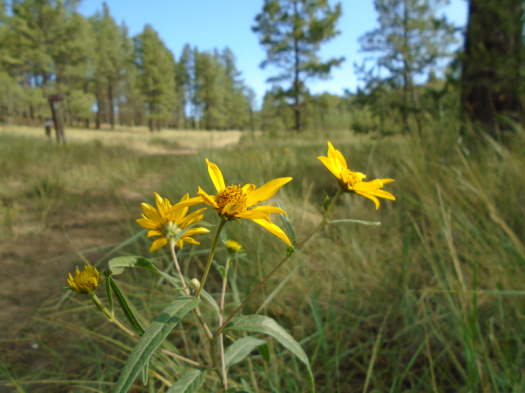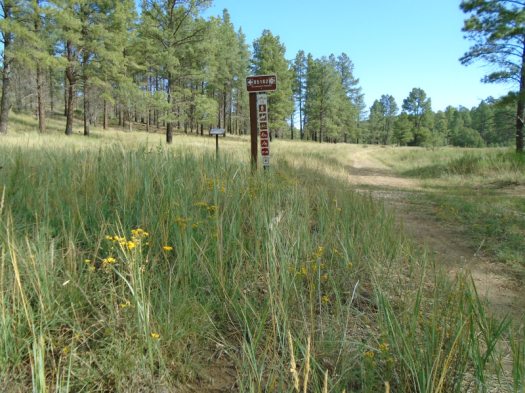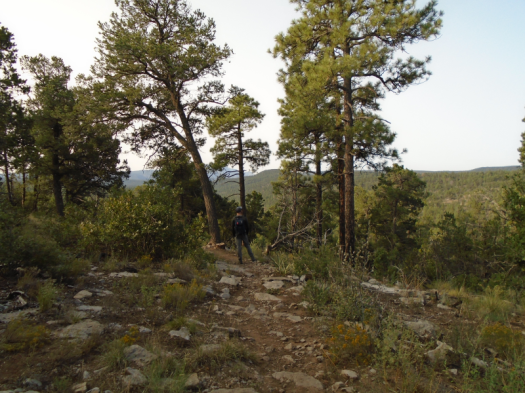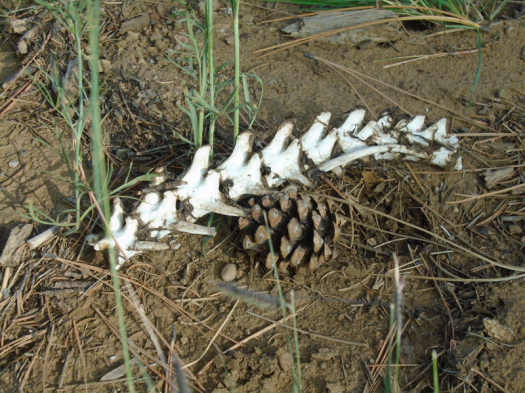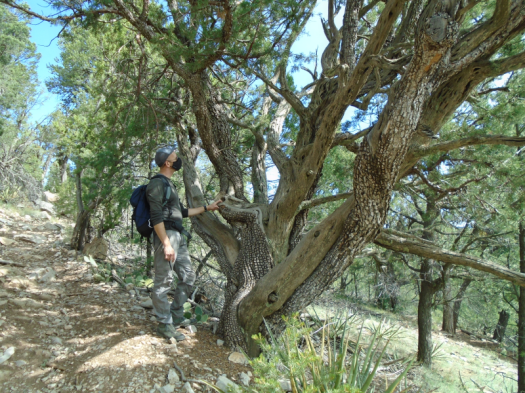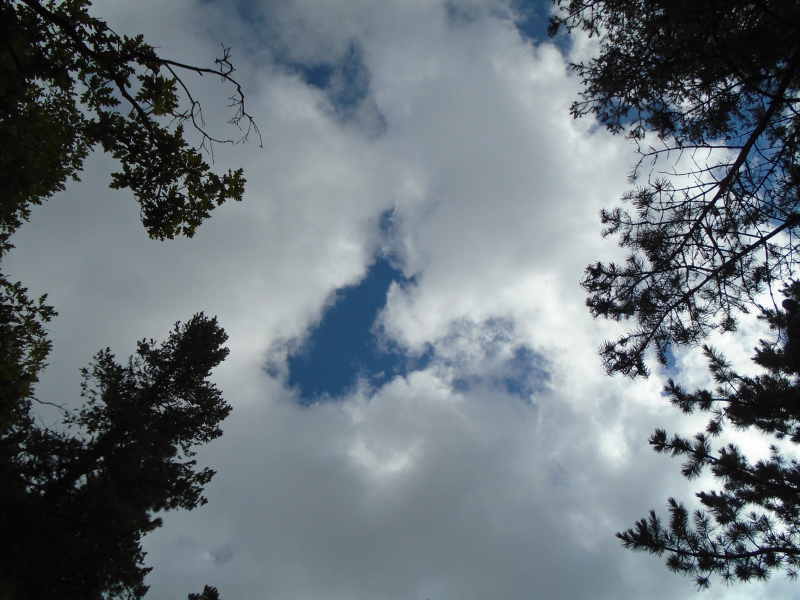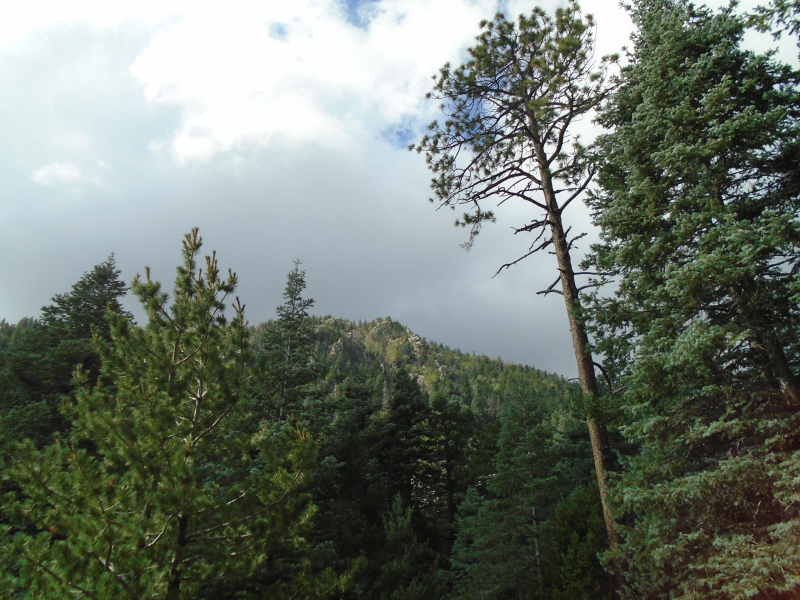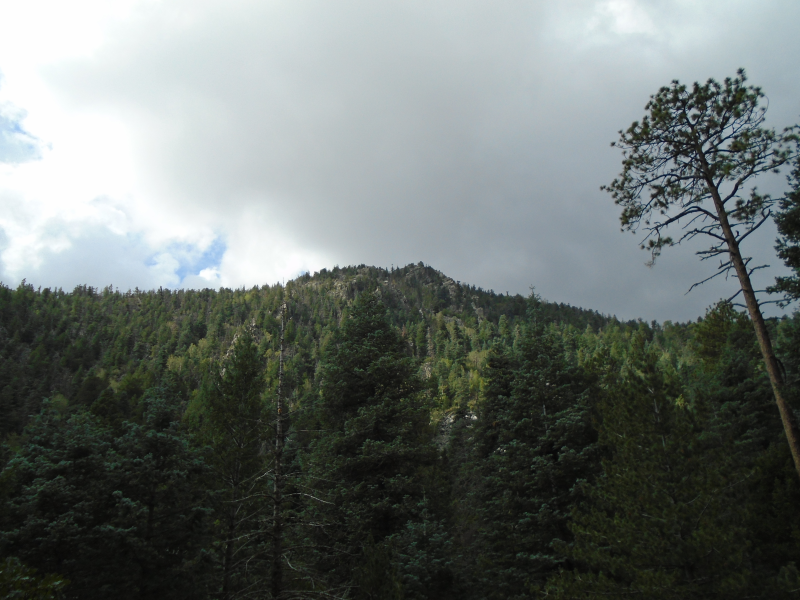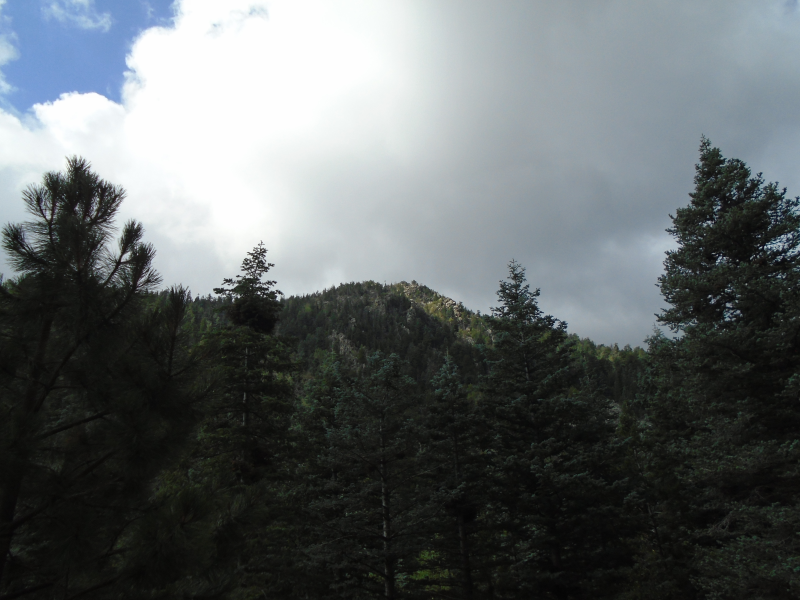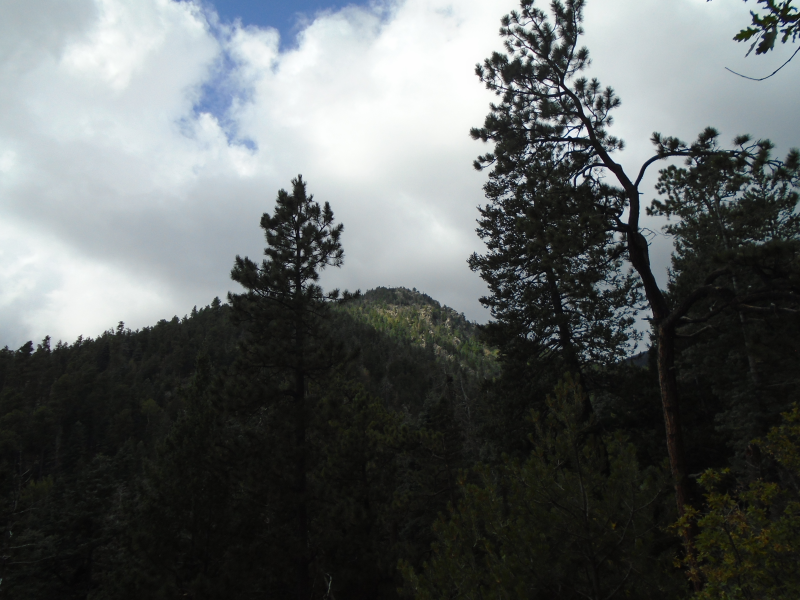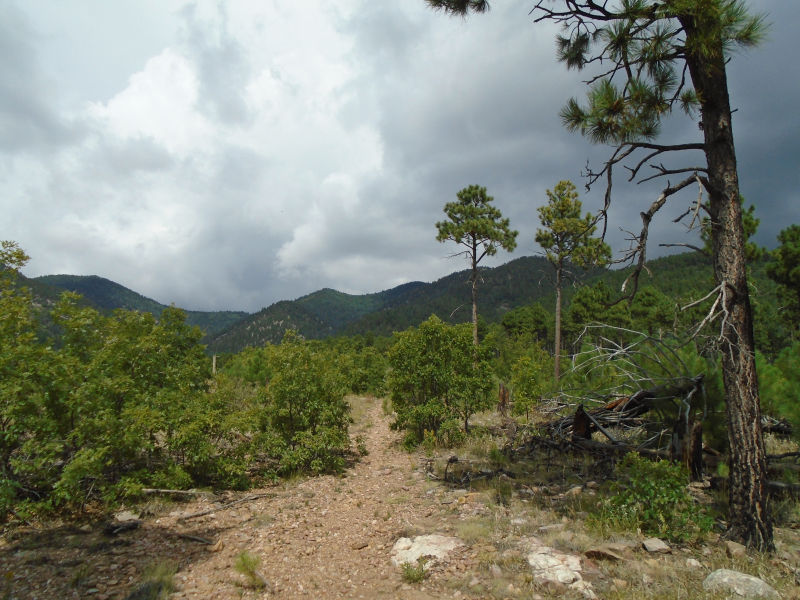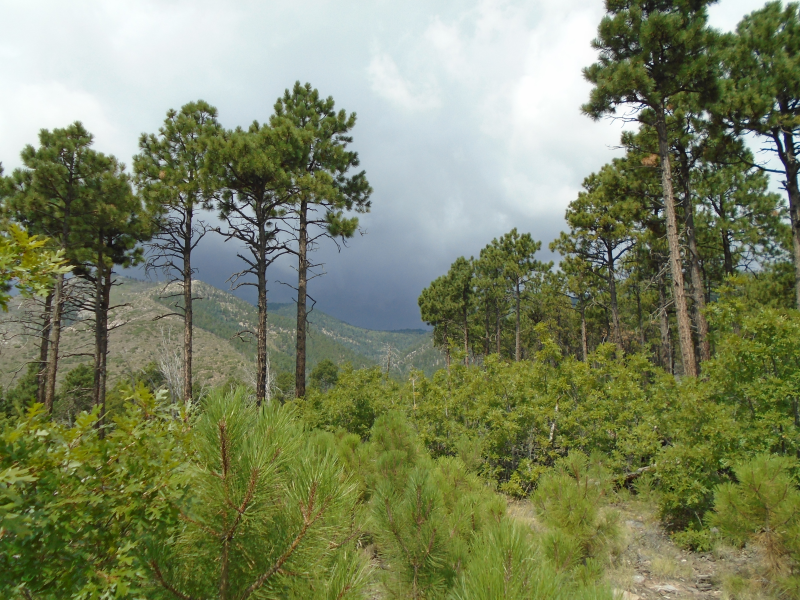Icy water shocks my toes.
I scramble up the bank of the Rio Guadalupe to a boulder. The morning sun dries my still-tingling feet in minutes.
We weren’t sure we’d see a river at all in this dry year. The Rio Guadalupe doesn’t reach mid-calf today, but you have to get wet to cross it.
Up Holiday Mesa. Gnarled old forest road, steep and rocky. Hundred-foot ponderosas part for brilliant blue. Yellow and red leaves light the slopes.
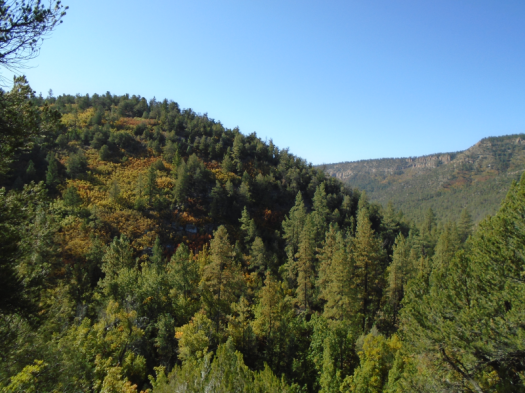
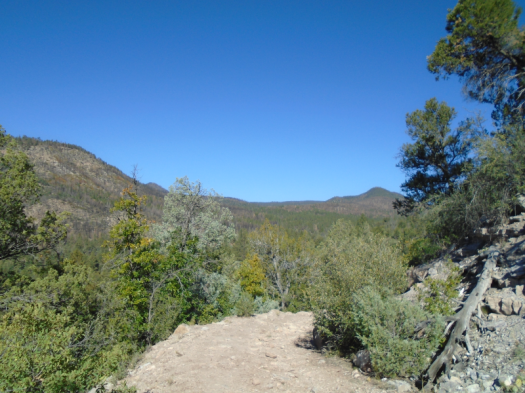
Our guidebook promises another little stream if it’s been a good water year. It hasn’t, but still we hear a gurgle, spot a tiny, terraced waterfall notched into a hill.
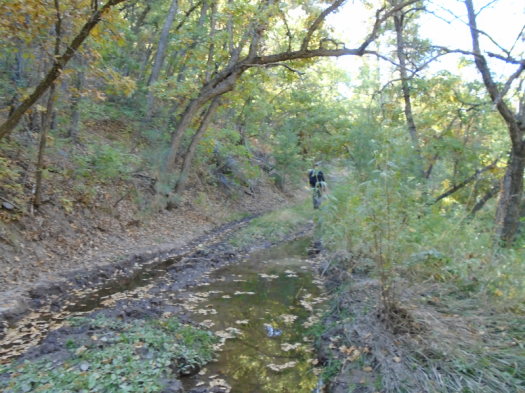
The road twists. The canyon falls away. The layer cakes of Jemez mesas emerge.
The people of Walatowa loved these mesas first, undoubtedly will love them last.
In between, land grants. Tunnels blasted through rock three miles away, to log this land. The Forest Service, claiming roads like the one we walk, Ryan and Ausherman write.
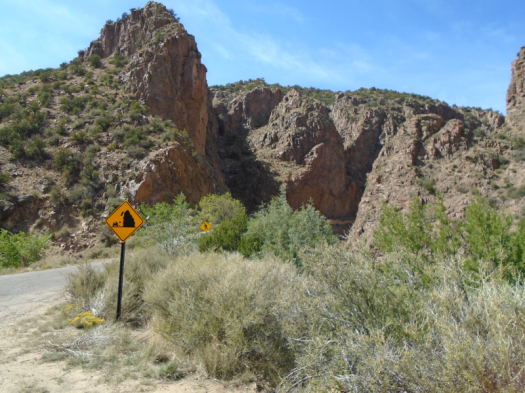
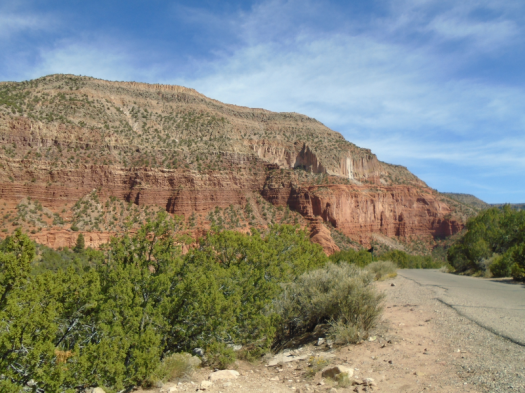
And now, the knowing that what we see will disappear.
The Jemez as it looks today operates on borrowed time. Its thick blanket of pinon, juniper and ponderosa could cease to exist here, amid the stressors the Jemez faces: warming, drought, catastrophic fire. So journalist Laura Paskus reports in her new book, “At the Precipice: New Mexico’s Changing Climate.”
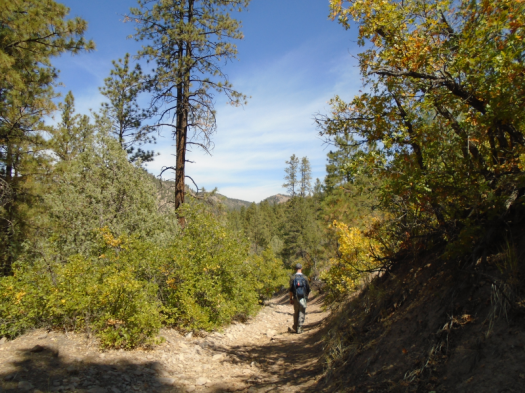
Looking out from the top of Holiday Mesa, I see the marks of a fire I can’t name.
Black sticks dot the slopes, a very familiar sight after more than a decade in New Mexico. Under the sticks, purple-gray watercolor appears to wash the mesa. Maybe the colors left behind when a storm pushed torrents of mud down the naked land.
Far below snakes the dirt road that brought us to this forest.
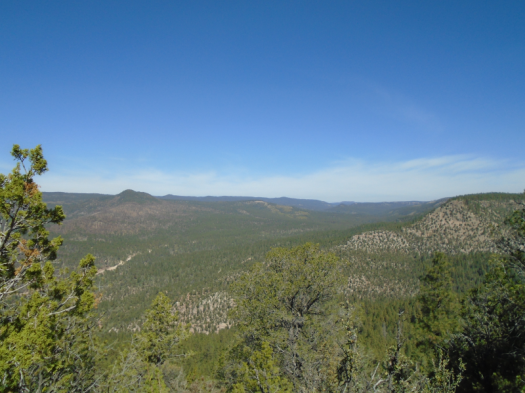
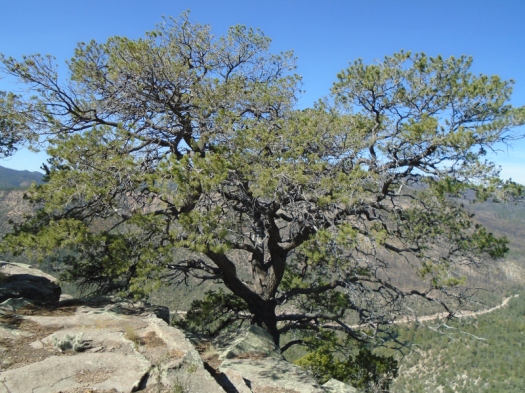
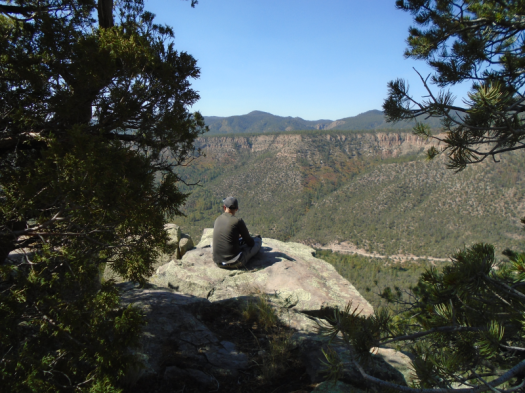
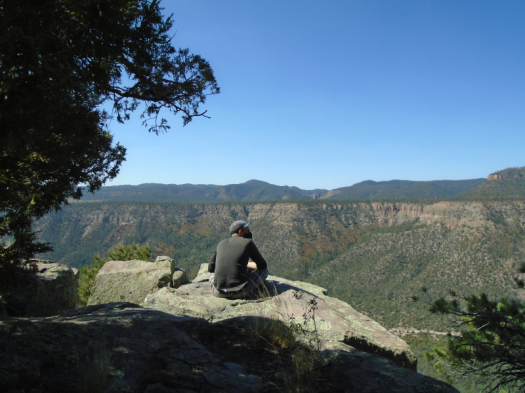
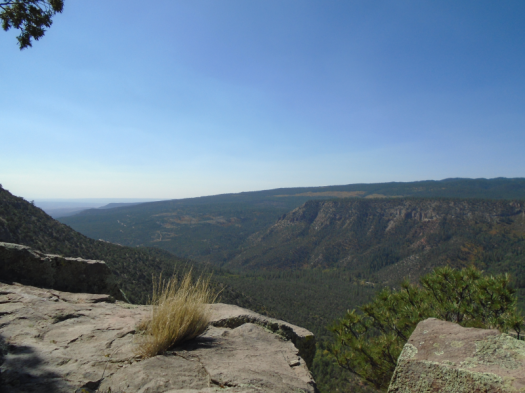
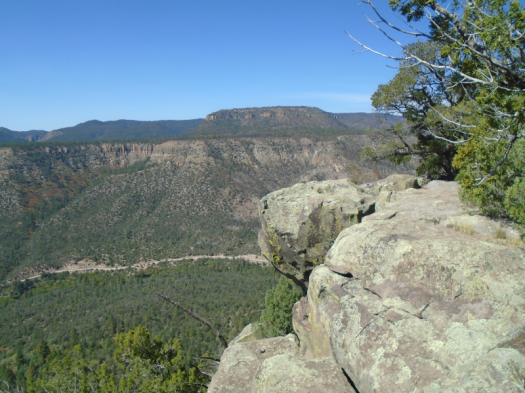
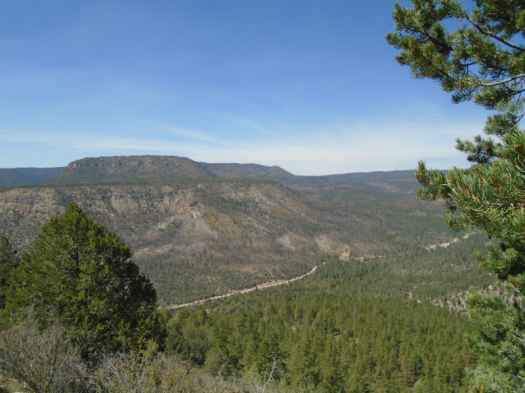
The road becomes volcanic tuff on top of the mesa. It feels and sounds like rubber under my hiking poles. Cows side-eye us, moos like gravel.
Oak leaves blaze almost-October orange against blue sky.
But the temperature’s above 80, even at 7,000 feet elevation. Northwest wind whips the mesa. In the mountains near Albuquerque, this wind, plus low humidity, has prompted a red flag warning. Nearly anything could spark a fire.
I’m hot and dusty and as thirsty as I’ve been on a hike in a very long time.
When the cold Rio Guadalupe swirls around my feet again, it feels like a blessing.
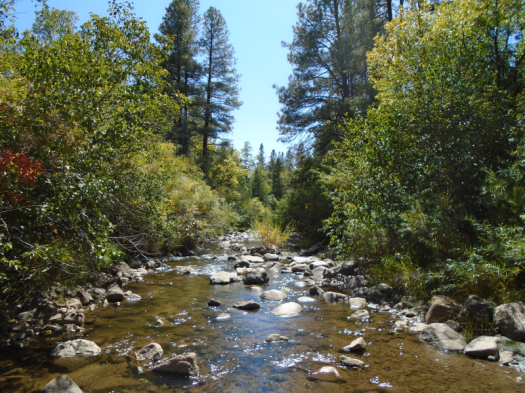
Hike length: 6 miles
Difficulty: moderate (sections of the climb up the mesa are strenuous)
Trail traffic: one guy and his hunting dogs at the river
Wildlife spotted/heard: rabbits, chipmunks, bluebirds (on road to trailhead); pigeon, hummingbird, Abert’s squirrel, nuthatches, pinyon jays
